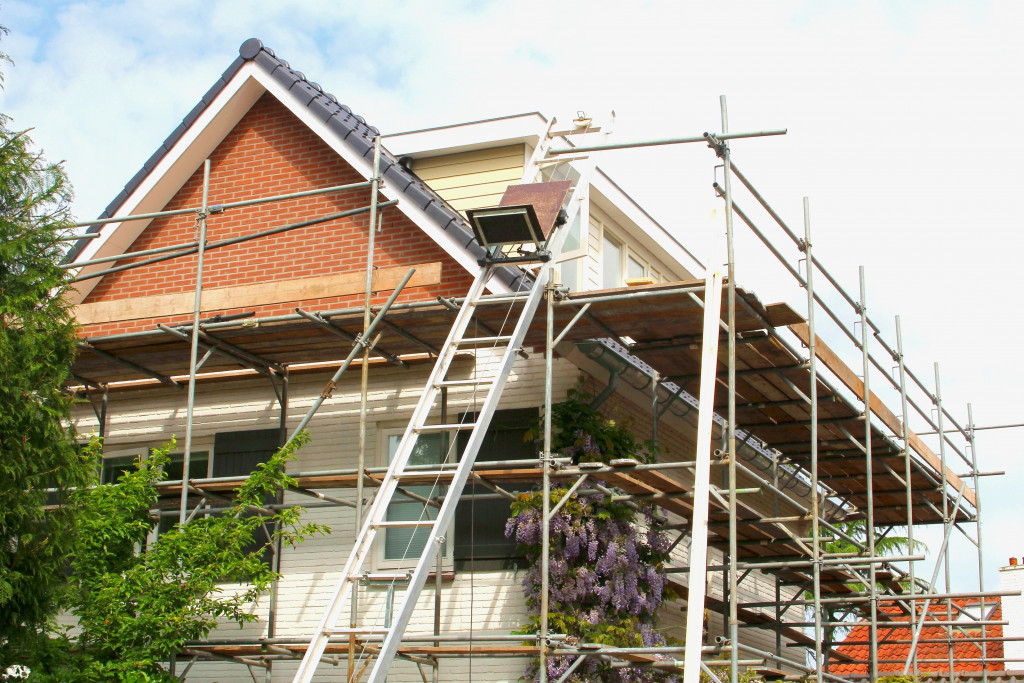As the UK housing market boomed during the pandemic, the costs of building materials soared. The travel restrictions impeded the movement of goods. As such, supply shortages in the construction industry occurred. It delayed building projects and increased the price of materials.
The shortage was so dire compared to visiting Sainsbury’s and finding no stocks of bread, milk, and eggs. Paul Bence, the managing director of builders merchants Bence, says that cement is their bread and butter, and they usually keep ten days’ worth of stocks. He adds that they would not operate a “just-in-time” model. But they spiraled into that, thanks to the pandemic.
Coupled with a huge demand for housing projects, the market triggered a more than 10% price increase in building materials. Hence, the rate of contractors and builders increased as well. Ultimately, it spiked the costs of home renovations.
In 2018, the median cost of home renovations was only £18,000, according to the 2019 UK Houzz & Home Renovation Trends. That cost spiked dramatically after just two years. In 2022, the average cost of renovating a three-bedroom house is £76,900 to £138,800.
Here’s how much you’ll likely spend if you do one room at a time:

Kitchen Remodeling
If you only buy new appliances, here’s a breakdown of the average prices per appliance:
- Free-standing fridge freezer (58 cm): £200 to £450
- Electric cooker (60 cm): £200 to £500
- Stove hood (60 cm): £90 to £300
- Dishwasher: £200 to £600
- Washer/dryer: £300 to £550
With professional installation, your appliance upgrade could cost £1,230 to £2,640. That already covers two to three days of labor.
If you only need new surfaces and hardware, expect to shell out £1,386 to £3,505, professional fitters’ fee included. Cabinetry is a major cost driver, with eight units costing an average of £1,400. And mind you, that’s only for a low-range, 10-square meter kitchen. If you prefer a mid-range renovation, the estimated cost for that excluding the appliances is from £2,655 to £7,420. That includes professional installation as well. With new appliances, you might spend £5,105 to £12,420. Mid-range cabinetry is already factored in, with its average price of £3,100 for eight units.
All in all, renovating a 10-square meter kitchen would cost £1,230 to £12,420.
Bathroom Remodeling
As of 2022, the average cost of bathroom remodeling is £4,500. But you can save a lot of money by opting for low-cost fittings. Here’s a breakdown of price estimates per upgrade:
- Toilet: £100 to £175
- Basin: £100 to £200
- Bath: £250 to £400
- Shower: £350 to 600
- Shower enclosure: £350 to £500
- Heated towel rack: £200 to 300
- Radiator: £200 to 300
These estimates already include the fee of professional bathroom fitters. Even so, the prices are clearly affordable. For only around £2,475, you can already start a mid-range bathroom remodeling project. If you’d do a total renovation, as in you would remove tiles and counters and replace them with new ones, the average estimates could reach £3,650 to £4,850. Factor in a new vanity, and you’d spend an additional £100 to £200. If you also want a bathtub, the price for a standard model is between £250 and £400.
Roof Replacement
Roof replacement projects also saw a jump in demand recently. The UK national average for this home improvement is £5,500. Most homeowners spend between £3,000 and £16,300. The larger and more complex the roofing material is, like a slate roof, the more expensive the rates become.
As for installation, professional roofers charge around £120 to £250 per square meter.
Ways to Fund a Home Renovation
It can be challenging to save money for a renovation with these skyrocketing prices. But no one should feel like they can’t make their homes more beautiful. These are five ways to fund your dream renovation:
-
Savings
The easiest way to pay for a renovation will always be using your own money. But you don’t have to drain your account. Build a budget for the project first, and wait until you’ve saved up enough before starting the project.
-
Credit Card
If you only need new appliances or bathroom fixtures, paying with your credit card will do. You may even get rewards and points for spending.
-
Unsecured Loan
An unsecured loan does not require collateral. If you have a good credit score, you may qualify for this type of loan. It lends you up to £50,000, which can be more than enough for a low-range renovation.
-
Secured Loan
If your credit score is leaning on the low side, you may only qualify for a secured loan. This will put your assets at risk, but you have nothing to fear if you save enough for the monthly payments. Plus, a secured loan has a lower interest rate than an unsecured loan.
-
Remortgaging for Home Improvements
Remortgaging your home allows you to borrow against its equity. As such, you can obtain enough cash for a full-scale renovation. But this would extend the term of your mortgage.
Thanks to these diverse funding options, a home renovation remains within reach, despite rising prices. And home renovations are totally worth it because we might continue to stay at home in the years to come.




